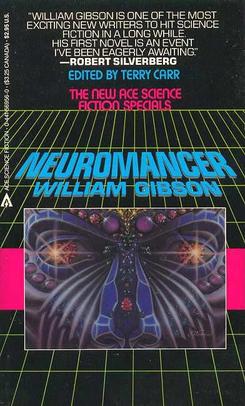The first Selznick-Hitchcock production, 1940's Rebecca, proved something of a nightmare for the notoriously cash-strapped Selznick, who was aghast when the film cost a grand total of $1,288,000. Set in France and Cornwall but shot entirely in California, Rebecca was a first for Hitchcock in more than one way: not least, it netted him his only ever Best Picture Oscar.
The prologue is perhaps one of the most famous in cinematic history: 'Last night I dreamt I went to Manderley again', a woman begins as the camera travels through the iron gate and up the overgrown road to the ruin of the house, and I must admit my heart sank, for although the sequence is gorgeous the voiceover narration is quite awful, intoned in the most strange and inappropriate way. It was early still, and even in 2011 voiceover is overused or used badly far more often than it is employed effectively.
We cut to Monte Carlo, where a man (Laurence Olivier) is standing at a precipice, seemingly ready to hurl himself over the edge; he is interrupted by a young girl (Joan Fontaine, cast against the objections of Olivier, who preferred his lover Vivien Leigh for the part). The gentleman turns out to be Maxim de Winter, recently widowed lord of the family seat of Manderley in Cornwall; she's a never-named orphan who serves as a paid companion to the horrid social climber Edythe Van Hopper (Florence Bates). (Unfortunately the film cuts my favourite moment in the novel, in which Maxim stealthily insults Mrs Van Hopper by assuring her that Manderley hasn't entertained royalty since Ethelred the Unready: 'In fact, it was while staying with my family that the name was given him. He was invariably late for dinner.')
The girl falls in love with the distant, wounded Maxim, and he soon asks her somewhat brusquely to marry him. To Mrs Van Hopper's chagrin, she accepts and, after a quick wedding in Monte Carlo and a honeymoon in Europe, Maxim and the second Mrs de Winter return to Manderley. She finds that the house is still living under the long shadow cast by the first Mrs de Winter, Rebecca, who drowned off the coast. Most servants are friendly, with the exception of the prim Mrs Danvers (Judith Anderson), who is fiercely devoted to Rebecca and makes it very plain that her master's nervous, low-born new wife does not measure up.
In the hands of Hitchcock and cinematographer George Barnes, who received a richly deserved Academy Award for his work, Rebecca is a film of windows, doors and shadows, of actors dwarfed by the house around them. It is also curiously fixated on curtains, opened and closed by the second Mrs de Winter and Mrs Danvers to enter and leave Rebecca's room: a number of great images spring from the juxtaposition between white curtains and Mrs Danvers's black clothes.
Hitchcock uses his characteristic zooms and pans to great effect, and creates what may be my favourite image in the film: the second Mrs de Winter in mid-ground as Maxim steps in front of the camera in the foreground, totally obscuring her. At the same time, Rebecca suffers oddly from mixing Hitchcock's two prevalent modes: in the third act, the film goes from mythic to procedural, and as a result of that dissonant tonal shift it sags mightily before rallying at the end.
It's tempting to read Rebecca as an allegory of the profound social changes then underway in England. My friend noted that there seemed something distinctly Jane Austenish about life at Manderley; but this, we agreed, was more appearance than reality. Jane Austen's works were read by a literate, sufficiently well-off élite; by contrast, in the age of mechanical reproducibility the troubles of Mrs de Winter were splashed all over the world's cinema screens. Frith (Edward Fielding), Manderley's oldest servant, refers to the fact that once a week the general public is admitted to the great hall; this would have horrified Austen's contemporaries, but by the 1930s aristocrats could count themselves lucky if they were able to retain their country houses by surrendering to the new mass culture.
If we take Manderley as a microcosm of England under the aristocracy, Rebecca is the symbol of that fading ruling class: commanding all the qualities of a lady, she is the final flowering of England's noble houses. Even in death, her vengeful spirit lingers on, resenting the intrusion of the upstart second Mrs de Winter into her place. It's notable, though, that Max is remarkably relaxed about the new equality. His social position permits him that luxury. Mrs Danvers, however, must defend Manderley: her whole identity is bound up with the old social order.
These three poles - the commoner, awed but increasingly assertive in the face of aristocracy; the aristocrat himself; and the faitful servant - are portrayed by three of the most capable actors to ever appear on screen together; but to me there's no doubt Judith Anderson is the greatest of the three. She plays the character to perfection: her contempt hiding behind cold courtesy, her faithfulness to Manderley, her devotion to Rebecca that carries more than a hint of lesbian infatuation (this, of course, makes her crazy). The famous window scene between her and Joan Fontaine is as chilling and moving as anything you're ever likely to see.
The film's gender politics are fascinating, too. Rebecca is known to have been sexually voracious in a way that Max can't seem to imagine of his new wife. There's something distinctly uncomfortable about his belittling of the second Mrs de Winter, whom he treats more like a child than an equal; but if he hopes to keep the shadow of Rebecca at bay by choosing a passive woman to whom he can be a father as much as a husband, he fails. It's a film about the failure of old loyalties, of feudalism, of patriarchy - and yet, at the same time, about their lingering terrible power.





